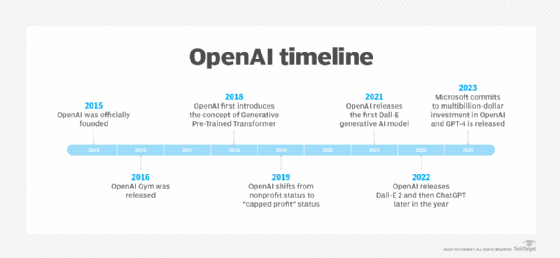Over-the-Counter Birth Control: Implications For Reproductive Rights After Roe V. Wade

Table of Contents
Increased Access and Affordability
The high cost of prescription birth control is a significant barrier to reproductive healthcare for many Americans. For low-income individuals and those with limited or no insurance coverage, the financial burden is often insurmountable, leading to delayed or forgone care. This inequity disproportionately affects marginalized communities.
Economic Barriers to Contraception
- High cost of prescription birth control: Many forms of effective contraception, such as hormonal pills, patches, and rings, can be expensive, even with insurance.
- High co-pays and deductibles: Even with insurance, co-pays and deductibles can make birth control unaffordable for many.
- Lack of insurance coverage: Millions of Americans lack health insurance, leaving them with little to no access to affordable contraception.
- Geographical limitations: Access to healthcare providers, especially specialists, is limited in many rural areas, creating further barriers to obtaining prescription birth control.
Making birth control available OTC could significantly alleviate these economic barriers. Lower prices, elimination of prescription costs, and wider availability would increase access for those currently excluded due to financial constraints. This improved access could lead to a significant reduction in unintended pregnancies, particularly within low-income communities.
Convenience and Accessibility
The convenience of OTC access to birth control cannot be overstated. Currently, obtaining prescription contraception requires scheduling appointments, navigating insurance complexities, and potentially facing long wait times. This process can be particularly challenging for individuals with busy schedules, limited transportation options, or those living in rural areas with limited access to healthcare providers.
- Increased accessibility through pharmacies and retail stores: Wide availability in pharmacies and other retail outlets would drastically increase accessibility.
- Eliminating the need for doctor's appointments: OTC access removes the need for a doctor's visit, saving time and reducing barriers.
- Reduced wait times: Obtaining contraception becomes immediate, rather than a delayed process.
- Potential for online purchasing: Online purchasing could further enhance convenience and accessibility, particularly for those in remote areas.
Increased convenience through OTC birth control has the potential to significantly improve birth control use rates, leading to better reproductive health outcomes.
Potential Concerns and Challenges
While the advantages of OTC birth control are significant, potential concerns must be addressed proactively. These concerns relate to the potential for misuse, misinformation, and regulatory hurdles.
Misinformation and Self-Medication
Unsupervised access to birth control raises concerns about the potential for incorrect usage, misuse, and lack of proper medical guidance. This necessitates a robust public health campaign to educate individuals on proper usage, potential side effects, and when to seek professional medical attention.
- Importance of thorough education and accessible resources: Comprehensive educational materials and resources, easily accessible through various media channels, are crucial.
- Potential for adverse reactions: Individuals need clear information on potential side effects and how to manage them.
- The need for comprehensive sex education: Effective sex education plays a pivotal role in ensuring individuals can make informed decisions about their reproductive health.
Addressing these concerns requires a multifaceted approach involving public health initiatives, educational campaigns, and readily available resources, emphasizing responsible use of OTC birth control.
Regulatory Hurdles and Political Opposition
The path to making birth control OTC is not without its obstacles. The FDA approval process is rigorous, and political opposition from anti-abortion groups is likely. State-level regulations may also pose challenges to nationwide implementation.
- FDA approval process: The FDA's thorough review of safety and efficacy is crucial but can be time-consuming.
- Potential lobbying efforts by anti-abortion groups: These groups are likely to actively oppose measures to increase access to contraception.
- State-level regulations restricting access: Some states may introduce or maintain regulations that restrict access to contraception, even if it’s available OTC in other states.
- Concerns about potential unintended consequences: Concerns about potential unintended consequences must be addressed through rigorous research and analysis.
Navigating these challenges requires strategic advocacy, collaboration among healthcare professionals, policymakers, and community organizations.
The Impact on Reproductive Rights
The implications of OTC birth control extend far beyond mere convenience; it's a crucial step towards ensuring reproductive justice. It can disproportionately benefit marginalized groups who currently face significant barriers to accessing reproductive healthcare.
Expanding Access for Marginalized Groups
OTC birth control can significantly improve access for groups who are often underserved.
- Improved access for low-income individuals: Lower costs and easier accessibility can dramatically improve reproductive health outcomes for low-income populations.
- Those in rural areas: Increased availability in pharmacies and potential online purchasing can bridge geographical barriers.
- People of color: Minorities often face systemic barriers to healthcare, making OTC birth control a crucial step towards health equity.
- LGBTQ+ individuals: The LGBTQ+ community often faces discrimination and stigma in accessing healthcare, and OTC birth control can help mitigate these challenges.
- Individuals with disabilities: Individuals with disabilities may encounter additional barriers to accessing healthcare; OTC birth control enhances their autonomy.
Expanding access to birth control through OTC availability can lead to significant improvements in health outcomes and a reduction in unintended pregnancies among these marginalized groups.
The Broader Context of Reproductive Justice
The push for OTC birth control must be viewed within the broader context of reproductive justice. This framework emphasizes the fundamental right of all individuals to have children, not have children, and parent the children they have in safe and sustainable communities. Access to birth control is intrinsically linked to reproductive autonomy and overall well-being.
- Link to broader access to healthcare, including abortion access: Access to contraception is vital for preventing unintended pregnancies and reducing the need for abortion services.
- Comprehensive sex education: Effective sex education empowers individuals to make informed decisions about their reproductive health.
- Affordable healthcare: Access to affordable healthcare is crucial for ensuring access to a full range of reproductive health services.
Expanding access to OTC birth control contributes significantly to the overall goal of reproductive justice by empowering individuals to make informed choices about their bodies and their futures.
Conclusion
The shift towards over-the-counter birth control presents a complex but potentially transformative scenario for reproductive rights post-Roe v. Wade. While increased access and affordability offer substantial benefits, concerns regarding misinformation and regulatory hurdles necessitate proactive mitigation strategies. By addressing these challenges with thorough education, accessible resources, and robust public health initiatives, we can work towards a future where over-the-counter birth control truly empowers individuals to make informed choices about their reproductive health. Advocating for policies that support wider access to affordable and convenient contraception, including over-the-counter birth control options, is crucial to ensuring reproductive justice for all.

Featured Posts
-
 Bmw Porsche And The Shifting Sands Of The Chinese Automotive Market
Apr 22, 2025
Bmw Porsche And The Shifting Sands Of The Chinese Automotive Market
Apr 22, 2025 -
 The Zuckerberg Trump Dynamic Implications For The Tech Industry
Apr 22, 2025
The Zuckerberg Trump Dynamic Implications For The Tech Industry
Apr 22, 2025 -
 Double Trouble In Hollywood Writers And Actors On Strike
Apr 22, 2025
Double Trouble In Hollywood Writers And Actors On Strike
Apr 22, 2025 -
 Revolutionizing Voice Assistant Development Open Ais 2024 Announcements
Apr 22, 2025
Revolutionizing Voice Assistant Development Open Ais 2024 Announcements
Apr 22, 2025 -
 Fighting Resumes In Ukraine After Putins Easter Truce Fails
Apr 22, 2025
Fighting Resumes In Ukraine After Putins Easter Truce Fails
Apr 22, 2025
